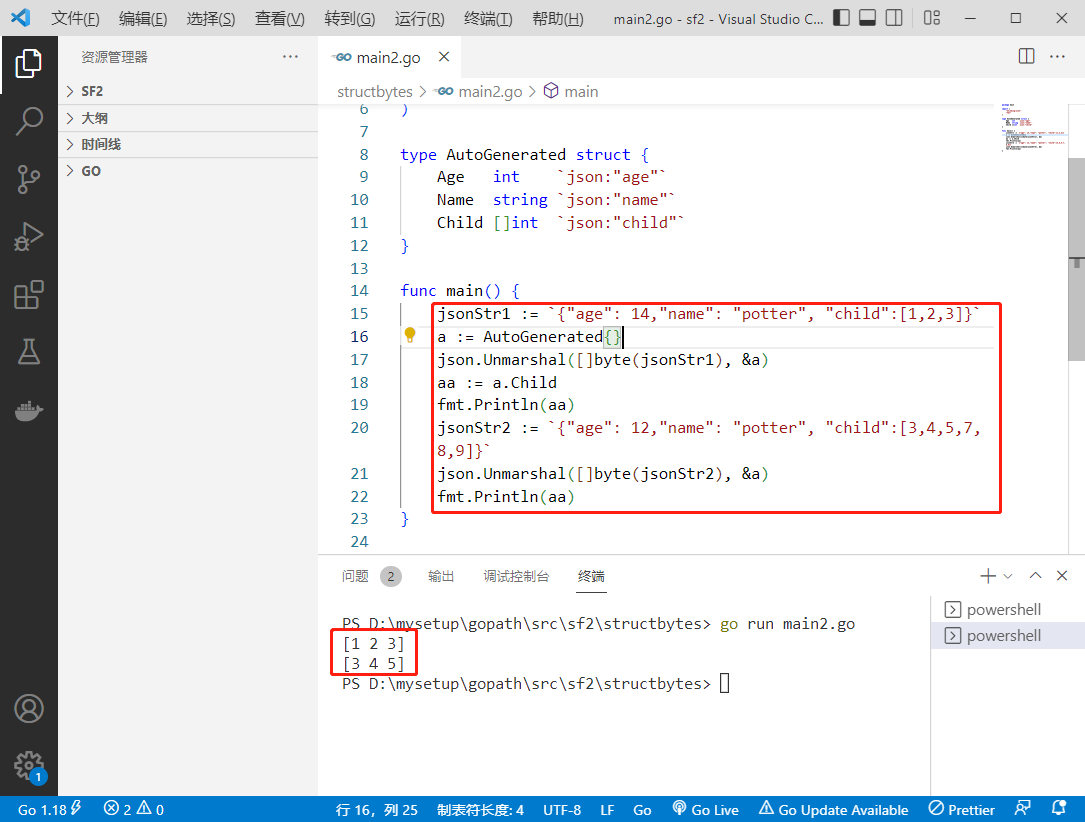2022-10-06:以下go语言代码输出什么?A:[1 2 3] [1 2 3] ;B:[1 2 3] [3 4 5]; C:[1 2 3] [3 4 5 6 7 8 9];D:[1 2 3] [3 4 5 0 0 0]。
package main
import (
"encoding/json"
"fmt"
)
type AutoGenerated struct {
Age int `json:"age"`
Name string `json:"name"`
Child []int `json:"child"`
}
func main() {
jsonStr1 := `{"age": 14,"name": "potter", "child":[1,2,3]}`
a := AutoGenerated{}
json.Unmarshal([]byte(jsonStr1), &a)
aa := a.Child
fmt.Println(aa)
jsonStr2 := `{"age": 12,"name": "potter", "child":[3,4,5,7,8,9]}`
json.Unmarshal([]byte(jsonStr2), &a)
fmt.Println(aa)
}
答案选B。以为选C,但运行结果感人。根据运行结果推断,第一次序列化a.Child是[1,2,3],第二次序列化的时候,是先修改a.Child的值3,4,5,然后追加a.Child的值,而且是一个一个追加的7,8,9。





 京公网安备 11010502036488号
京公网安备 11010502036488号